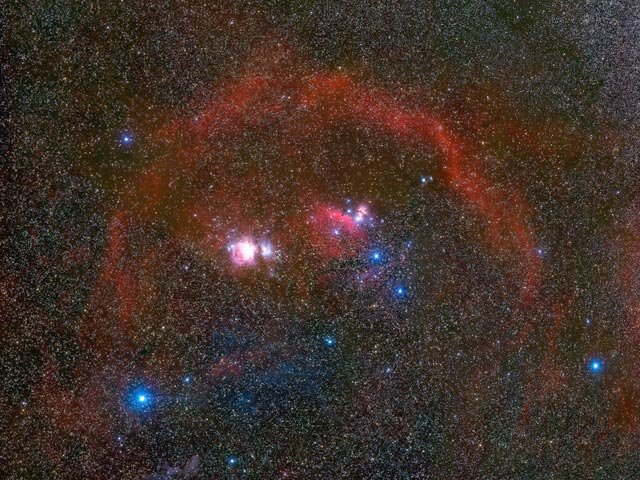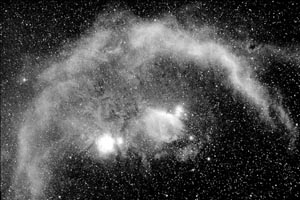Barnard's Loop

Barnard's Loop. Credit & copyright: W. H. Wang (IfA, U. Hawaii).

Image credit: Steve Mandel.
Barnard's Loop (also known as Sharpless 2-276) is a huge nebular shell, about 1,600 light-years away, in the constellation Orion. It appears in photos as a semicircular arc 14° across that envelopes a large part of the Orion Complex and surrounds both Orion's Belt and Orion's Sword. Though William Herschel may have been the first to see it in 1786, its discovery is generally credited to Edward Barnard (who called it the "Orion Loop") who captured it on long-duration photos in 1895.
Barnard's Loop is thought to have been formed by a series of supernovae that occurred two to three million years ago (which also gave rise to several runaway stars, including AE Aurigae, Mu Columbae and 53 Arietis) and is kept luminous by a group of hot young stars in the Orion OB1 Association. The ionized shell is part of an even larger molecular hydrogen cloud measuring some 30° across.
| diameter | 300 light-years |
| position | RA 05h 31m, Dec -04° 54' |


